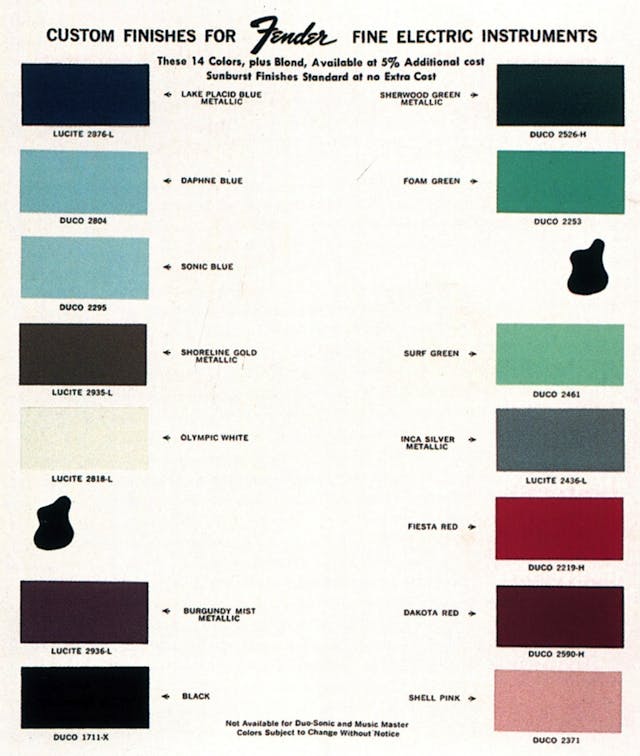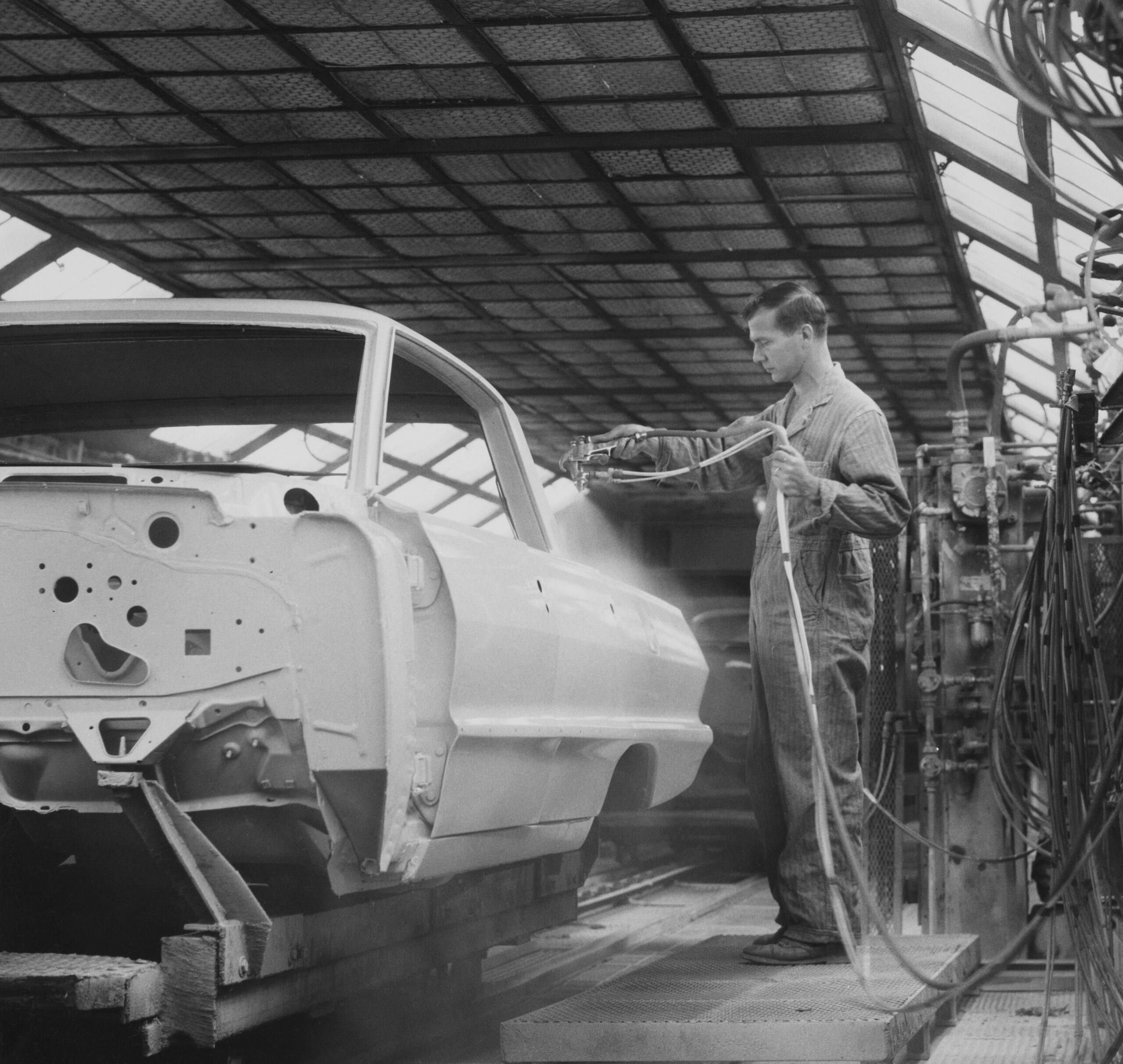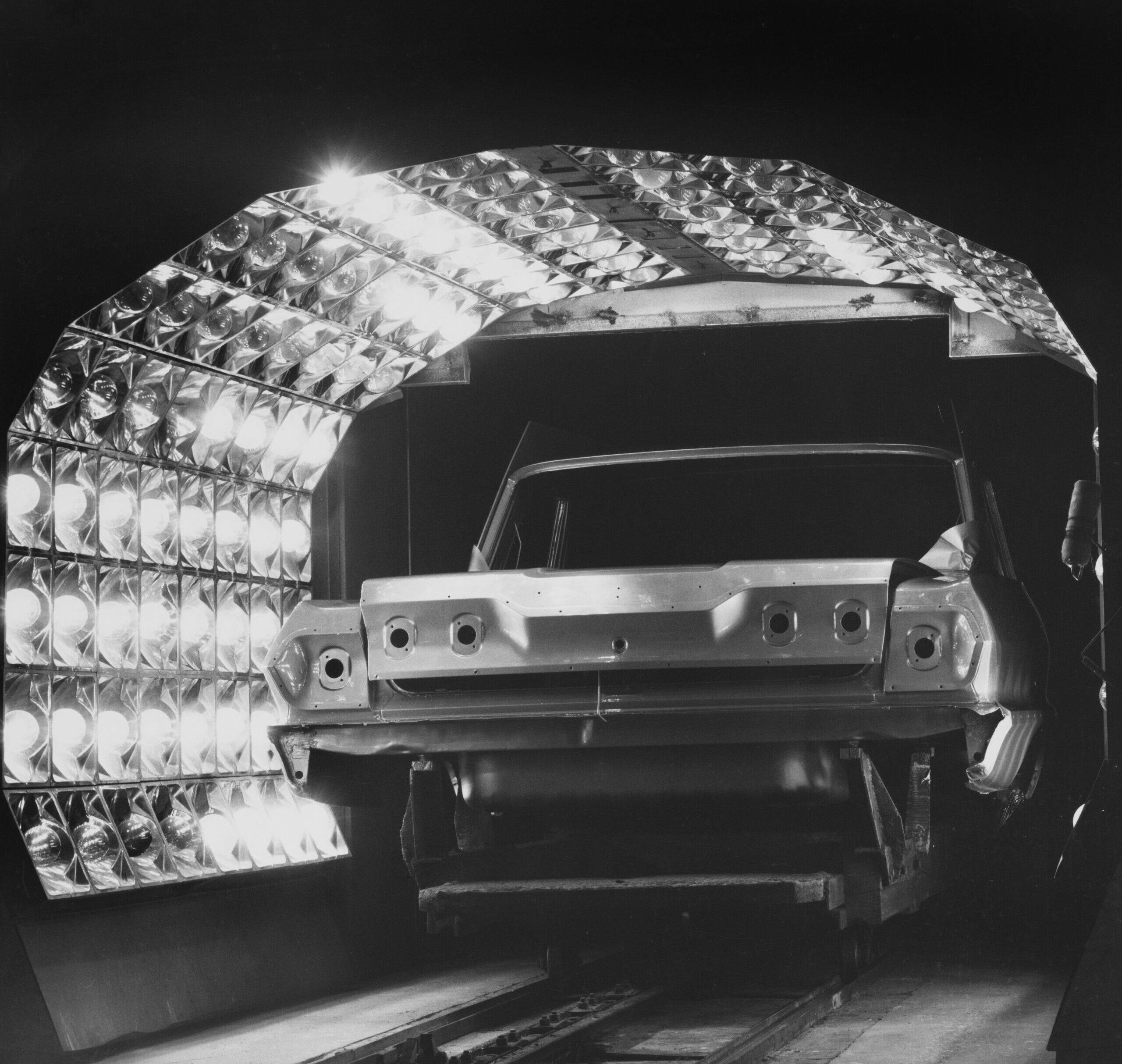The Color of Rock: How Hot Rods and Muscle Machines Tinted Classic Guitars
The ties between rock ‘n roll and automotive culture date back to their respective origins. In the years after World War II, returning servicemen began repurposing surplus materiel into high-speed racers, while also hopping up tamer fare for hot rod street performance. At the same time, a new and vibrant youth culture coalesced around a musical fusion of pop and R&B. The movement quickly replaced the lighter instrumental fare that had, until that point, dominated music charts.
The marriage of rock and chrome through the 1950s and 1960s has been chronicled by all manner of popular media (including Hagerty) not to mention in the lyrics of the era’s own songs. Chuck Berry, the Beach Boys, and Jan & Dan led the way with name-checks on their favorite models, their drag racing exploits, and their back-seat maneuvers. While much has been made of the artistic impact that gasoline and gears have had on the music industry, there was also meaningful creative cross-pollination creatively in the other direction. I’m speaking specifically about guitars shaped by cars and car culture in the ’50s and ’60s.
Instrument manufacturers Fender, Gibson, and Gretsch—makers of some of the most iconic guitar and bass designs of that era—borrowed their product nomenclature from what young people were racing (or admiring) on the street. Music shops and bandstands filled up with axes with names like Mustang, Jaguar, Thunderbird, and Toronado.

It wasn’t just names, either. In fact, if you look closely enough at what rock and roll heroes were playing on stage, you might notice that nearly the entire color palette of early rock and roll instrumentation draws from the paint booths of the Motor City’s car factories.
When you think of 1950s and 1960s rock and roll performers—assuming your memories aren’t fixated on the early black-and-white broadcasts of the day—the paint schemes slathered over guitars, drum kits, keyboards, and really popped in vibrant colors. Robin’s Egg blues mixed with fuchsia, searing lime greens, and deep metal-flaked reds in a celebration of the contemporary fascination with advances in industrial chemistry and the dyes and pigments that it delivered.

These bright hues were a match for the equally splendiferous cars busy peacocking up and down the boulevards of America’s cities and towns. It was an era of optimism, represented in expressive colors that today seem stunning compared with the dour, monotone palettes in dealer showrooms. Automakers of the ’50s and ’60s made it a point to provide as many custom and curious colors as possible for their wares to stand out in a cutthroat business.
Chemical Clues, Custom Colors
Paint formulas produced by DuPont in the late-1950s through the 1960s made this connection possible. These colors, which served popular brands like Cadillac, Chevrolet, and Oldsmobile, switched from nitrocellulose lacquer to acrylic lacquer in 1956 in a move that improved the durability of shine and color. Originally done at General Motors’ behest, it wasn’t long before others in the paint and automotive industries caught wind of the improved product, incorporating DuPont’s latest evolution of automotive-grade finish. By the early 1960s, acrylic lacquer was the new standard for cars.
Fender guitar finishes experienced similar changes. As with automobiles, lacquer was favored among luthiers for its quick-drying properties and its ease of use with industrial spraying equipment. The earliest Stratocasters and Telecasters were painted with nitrocellulose lacquer, and originals can be identified today by their light cracking, yellowing, and loss of pigment that—in many ways—matches the characteristics of car paint from the 1950s. Although nitrocellulose remained popular at Fender, the company shifted toward acrylic lacquer for its metallic finishes (underneath a nitrocellulose clear coat) as the 1960s wore on.
Record-keeping of Fender’s custom guitar and bass colors was spotty until about 1960, but from that moment forward the evidence that it lifted its hues straight from Detroit’s showrooms is clear. Both the DuPont and Ditzler paint codes for the vast majority of Fender paint colors could be tied directly to an automotive equivalent, with a heavy preference for General Motors (specifically, Cadillac) paints. Whether it was sprayed Sonic Blue, Surf Green, or Burgundy Mist Metallic, you could waltz into the dealer and pose beside the road-going match for your musical instrument.

This dynamic continued throughout the decade, albeit with a bit of an asterisk. Automakers were keener to rename their paint colors (and change up their ordering codes) much more regularly than smaller operations like Fender. So, although a guitar’s particular shade might still persist in the dealer showroom, by the mid-’60s it may have adopted a different moniker. Then there was the issue of planned obsolescence, which made it more difficult for Fender to source acrylic lacquer versions of some of the early nitrocellulose colors it had used in the 1950s. The car industry’s obsession with novelty forced such hues out of production.
By the 1970s, Fender had dramatically winnowed down its custom color options, emphasizing natural finishes. It also switched to polyurethane paint, away from lacquer, for most of its instruments. The pendulum swing back toward bright colors on guitars didn’t manifest until the early 1980s, but by then the automotive industry’s palette was nowhere near interesting enough to tempt rock and roll into its earlier copycat act.
Thank The Restorers
How do we have access to so many details about the link between classic guitar paint colors and their stop-light-racing, big-finned, V-8-powered, boulevard-cruising, inspirations? It’s largely through the efforts of guitar restoration buffs, both professionals and hobbyists, who have made it their mission to dig through the paperwork surrounding instrument production in their bid to bring them back to their original glory. These enthusiasts worked tirelessly to unearth color charts and establish links to automotive paint mixes of the day; their research has unlocked a part of rock and roll history that further illustrates the unbreakable bond between teenage rebellion on the radio and smoky burnouts on the streets.
***
Check out the Hagerty Media homepage so you don’t miss a single story, or better yet, bookmark it. To get our best stories delivered right to your inbox, subscribe to our newsletters.





That photo of a worker spraying acrylic lacquer without a respirator makes me shudder. I hope it was just done for the photo shoot.
It likely was not. I did lacquer spraying at a farm tractor plant in the mid-’70s – for about three days. When they put me in a curtained booth with no protective gear and hit the “start” button on the line, I was expected to spray the parts as they came by, and then clean up the equipment after my shift. A couple of times, I walked out of that booth not even knowing if it was day or night – let along what my Social Security number was. When I “came to” one night, I determined I was not going back to that job the next day.
Thanks to Joby Sessions/Guitarist Magazine/Future/Getty Images for that title photo and to Benjamin for putting it there. To an old garage band player and hot rodder, those subjects call up some of the best times of my life and certainly one of the best combos out there. Today it snowed here (again) so no Sunday cruise-in at the DQ, but just knowing that it’s just around the corner – and looking at picture like this one – will sustain me.
These pictures are amazing